How to Get a Motorcycle License
Method 1 of 3:
General Licensing Process
-
 Get a motorcycle handbook from your government's motor vehicle bureau. This book provides the information used to draw up the questions on the motorcycle learner's permit written exam. In most jurisdictions, the easiest way to get a copy is to download it from your motor vehicle bureau's website.[1]
Get a motorcycle handbook from your government's motor vehicle bureau. This book provides the information used to draw up the questions on the motorcycle learner's permit written exam. In most jurisdictions, the easiest way to get a copy is to download it from your motor vehicle bureau's website.[1]- You can also get a copy at the local branch of your motor vehicle bureau.
- Don't just skim through the book. Read it, take notes, and do any practice tests that may be provided.
- Consult the handbook or contact the motor vehicle bureau regarding the basic requirements for getting a motorcycle learner's permit. For instance, you typically have to be at least 16 years old in U.S. states.
-
 Apply for your motorcycle learner's permit. If you meet the basic criteria (minimum age, etc.) and have studied the handbook, go to the motor vehicle bureau to fill out a learner's permit application. You'll probably be required to pay a permit application fee and pass written and vision tests to receive one.[2]
Apply for your motorcycle learner's permit. If you meet the basic criteria (minimum age, etc.) and have studied the handbook, go to the motor vehicle bureau to fill out a learner's permit application. You'll probably be required to pay a permit application fee and pass written and vision tests to receive one.[2]- If you fail the written exam, you'll likely be able to take it again if you pay another application fee.
- The vision test is typically pretty rudimentary. If you need to wear glasses or contacts to pass it, a notation will likely be added to your permit (and later license) that you must wear them when operating a motorcycle.
-
 Practice operating a motorcycle with your learner's permit. You'll always have to wait some period of time before you can test for a full license. In some U.S. states the mandatory waiting period is 20 days, in others it's at least 6 months. In any case, spend this time practicing your skills.[3]
Practice operating a motorcycle with your learner's permit. You'll always have to wait some period of time before you can test for a full license. In some U.S. states the mandatory waiting period is 20 days, in others it's at least 6 months. In any case, spend this time practicing your skills.[3]- Obey the restrictions placed on the learner's permit. You may only be allowed to operate a motorcycle during daytime, and not be allowed to carry passengers.
- Don't drink any amount of alcohol before getting on your motorcycle. Learner's permits usually come with very severe blood alcohol content restrictions (often 0%).
-
 Complete an approved motorcycle training course to get your license (option 1). As the end of your learner's permit waiting period draws near, sign up for a privately-operated but government-approved motorcycle training course. In many jurisdictions, successfully completing this fairly brief (often 2-3 day) course means you can skip taking the road test at the motor vehicle bureau and go straight to getting your full license![4]
Complete an approved motorcycle training course to get your license (option 1). As the end of your learner's permit waiting period draws near, sign up for a privately-operated but government-approved motorcycle training course. In many jurisdictions, successfully completing this fairly brief (often 2-3 day) course means you can skip taking the road test at the motor vehicle bureau and go straight to getting your full license![4]- Once you pass the course, you'll get a certificate to bring to your motor vehicle bureau. If this is accepted in lieu of a road test, you'll be able to apply for your license at that point. Contact the office ahead of time so you know what to bring with you (ID, payment, forms, etc.).
- Make sure the course is approved by your motor vehicle bureau. In most U.S. states, courses overseen by the Motorcycle Safety Foundation are government-sanctioned and can allow you to skip the motor vehicle bureau road test.
-
 Sign up for the licensing road test at your motor vehicle bureau (option 2). Keep practicing your skills until the waiting period on your learner's permit is up. Then, visit your local motor vehicle bureau, fill out the motorcycle license application, and pay the application fee. Many U.S. states provide this application form on their website, but you'll likely have to submit it in person.[5]
Sign up for the licensing road test at your motor vehicle bureau (option 2). Keep practicing your skills until the waiting period on your learner's permit is up. Then, visit your local motor vehicle bureau, fill out the motorcycle license application, and pay the application fee. Many U.S. states provide this application form on their website, but you'll likely have to submit it in person.[5]- In some jurisdictions, you may be able to apply and take the road test on the same day, but typically you have to schedule a future test day.
- If possible, check the weather forecast before scheduling your road test, since you won't want to take it in the rain.
-
 Obtain a street-legal motorcycle you can ride for your test. You can buy one, rent one, or borrow one, but the motorcycle has to be legally registered for road travel in your jurisdiction. The motor vehicle bureau doesn't provide loaner bikes![6]
Obtain a street-legal motorcycle you can ride for your test. You can buy one, rent one, or borrow one, but the motorcycle has to be legally registered for road travel in your jurisdiction. The motor vehicle bureau doesn't provide loaner bikes![6]- Cruiser models with a low seat height are ideal for taking your motorcycle test on because they have a lower center of gravity.
- Verify you have insurance, valid license plates and registration for the motorcycle. You risk receiving a ticket if any aspects of your bike are not in compliance with the law.
- Motorcycle insurance is a separate policy from car insurance. Contact your insurer for information.
-
 Pass the road test and complete the paperwork for your license. If you know the course they use for the road test—sometimes it's just the motor vehicle bureau's parking lot—visit it during off hours before your test day. That way, you can practice braking, starting, stopping, and turning techniques while the office is closed.[7]
Pass the road test and complete the paperwork for your license. If you know the course they use for the road test—sometimes it's just the motor vehicle bureau's parking lot—visit it during off hours before your test day. That way, you can practice braking, starting, stopping, and turning techniques while the office is closed.[7]- If you fail the test, you can usually take it again at another time. There may be a limit on how many times you can take the test, however.
- Once you pass the road test, you'll just have to fill out some paperwork and (likely) pay some fees to get your motorcycle license or driver's license endorsement.
-
 Get your motorcycle license and hit the road! Whether you pass the road test given at the motor vehicle bureau or at an approved training course, you'll have to get your actual license at the motor vehicle bureau. Make sure you know what paperwork and fees are involved in the process. In most cases, getting your photograph taken is the last step in the process.[8]
Get your motorcycle license and hit the road! Whether you pass the road test given at the motor vehicle bureau or at an approved training course, you'll have to get your actual license at the motor vehicle bureau. Make sure you know what paperwork and fees are involved in the process. In most cases, getting your photograph taken is the last step in the process.[8]- You may get a temporary license until the permanent one is mailed to you, or be able to pick up your permanent license right away.
- Carry your license with you at all times when operating a motorcycle.
- In the U.S., a valid license in one state will permit you to ride legally in all the other states. If you move to a new state, though, you'll have to apply for a new license and may need to pass written and/or road tests.
Method 2 of 3:
Sample Process: California
-
 Get your motorcycle learner's permit. In California, the process for getting a learner's permit, and the waiting period required before you can get your full license, varies based on your age. You can apply for a permit once you reach age 15 ½.[9]
Get your motorcycle learner's permit. In California, the process for getting a learner's permit, and the waiting period required before you can get your full license, varies based on your age. You can apply for a permit once you reach age 15 ½.[9]- No matter your age, you have to make an appointment at the DMV, pass the written and vision tests, get fingerprinted and photographed, bring proof of identity and residency, and pay an application fee (currently $35 USD).
- If you're under 18, you also need parental permission and either a valid driver's license or proof that you've completed both driver's education and driver's training courses.
- If you're under 21, you must also have already completed the California Motorcyclist Safety Program.
- You'll need to keep the permit for at least 6 months before you can get your full license, if you're under 18. Otherwise, there is no minimum waiting period.[10]
-
 Complete a state-approved training course, especially if under age 21. If you want to get your license before you turn 21, you are required by law to complete a motorcycle training course that's been approved by the California Highway Patrol. Make sure you get a Certificate of Completion (form DL389) when you pass the course.[11]
Complete a state-approved training course, especially if under age 21. If you want to get your license before you turn 21, you are required by law to complete a motorcycle training course that's been approved by the California Highway Patrol. Make sure you get a Certificate of Completion (form DL389) when you pass the course.[11]- These courses are privately operated, but make sure they have been CHP-approved.
- Passing this course means you don't have to take a road test at the DMV. This is true if you're over 21 years of age as well.
-
 Take a road test at the DMV only if you're 21+ and didn't take a training course. This is the only scenario in which you are required to make an appointment with the DMV and take a road test at the facility. No matter your age, you can skip this hassle by completing an approved training course and getting completion form DL389.[12]
Take a road test at the DMV only if you're 21+ and didn't take a training course. This is the only scenario in which you are required to make an appointment with the DMV and take a road test at the facility. No matter your age, you can skip this hassle by completing an approved training course and getting completion form DL389.[12]- Contact your local DMV branch to book a road test appointment and determine what documents to bring and the fees involved. You'll have to bring a street-legal, licensed, insured motorcycle for the test.
-
 Bring the required documents to your DMV appointment to get your license. If you have a valid learner's permit, have waited the required 6 months (if under 18), and have passed either an approved training course or the DMV road test, you're ready to get your full license. Make an appointment at the DMV office and bring the following:[13]
Bring the required documents to your DMV appointment to get your license. If you have a valid learner's permit, have waited the required 6 months (if under 18), and have passed either an approved training course or the DMV road test, you're ready to get your full license. Make an appointment at the DMV office and bring the following:[13]- Your valid permit
- Your training course completion form (DL389) or the certificate of completion for your DMV-administered road test
- A California driver's license or other valid, acceptable identity document
- Proof of residency (only under certain circumstances; ask the DMV)
- Your Social Security number
Method 3 of 3:
Sample Process: Ontario
-
 Complete the requirements for an M1 permit. In Ontario, motorcycle licensing comes in 3 stages: M1, M2, and M. To get the M1 permit, start by studying the Ontario Official Motorcycle Handbook, available online or at a Drive Test centre. Then, if you're at least 16 years old, bring an approved ID to the centre and:[14]
Complete the requirements for an M1 permit. In Ontario, motorcycle licensing comes in 3 stages: M1, M2, and M. To get the M1 permit, start by studying the Ontario Official Motorcycle Handbook, available online or at a Drive Test centre. Then, if you're at least 16 years old, bring an approved ID to the centre and:[14]- Pass a vision test.
- Pay the application fee (currently $15.75 CAN).
- Pass a multiple-choice written test, which is based on the Handbook.
-
 Practice on your M1 permit for between 60 and 90 days. You have a limited time window here—you can't test for an M2 license before 60 days, but your M1 permit expires after 90 days. Spend this time practicing, but follow the rules for M1 permits:[15]
Practice on your M1 permit for between 60 and 90 days. You have a limited time window here—you can't test for an M2 license before 60 days, but your M1 permit expires after 90 days. Spend this time practicing, but follow the rules for M1 permits:[15]- Always wear a helmet when on a motorcycle.
- Don't operate a motorcycle with any alcohol in your system.
- Ride only during daylight hours.
- Don't go over 80 km (50 mi) per hour (with limited exceptions).
- Don't carry any passengers.
-
 Take a road test or an approved motorcycle safety course. After 60 days but before 90 days are up, you can go to a Drive Test centre and take a standard road test. If you pass, you'll get an M2 license. However, if you've completed a privately-operated but government-approved motorcycle safety course within the past 6 months, you can bring your certificate to the Drive Test centre and move up to M2 without taking the road test.[16]
Take a road test or an approved motorcycle safety course. After 60 days but before 90 days are up, you can go to a Drive Test centre and take a standard road test. If you pass, you'll get an M2 license. However, if you've completed a privately-operated but government-approved motorcycle safety course within the past 6 months, you can bring your certificate to the Drive Test centre and move up to M2 without taking the road test.[16]- Safety courses usually last 2 days, and provide a motorcycle for your use.
-
 Wait 18-22 months to take the second road test for your M license. If you took an approved safety course to get your M2 license, you need to wait 18 months before taking the final road test to get your permanent M license. If you took the M2 road test at a Drive Test centre, you'll have to wait 22 months. To take the M test:[17]
Wait 18-22 months to take the second road test for your M license. If you took an approved safety course to get your M2 license, you need to wait 18 months before taking the final road test to get your permanent M license. If you took the M2 road test at a Drive Test centre, you'll have to wait 22 months. To take the M test:[17]- Book a road test appointment (by phone or online) and list your 3 preferred Drive Test centre locations.
- Bring your M2 license and a street-legal, licensed, insured motorcycle to use for the test.
- Pay the required fee (currently $89.25 CAN).
5 ★ | 1 Vote
You should read it
- How to Prepare to Compete in a Motorcycle Road Race
- How to Be a Biker
- How to Start a Motorcycle
- How to Wash a Motorcycle
- How to Prepare for a Driving Test
- How to Get a Motorcycle Loan With Bad Credit
- 10 young and compact motorcycle journey camera
- Instructions for registering to change international driving licenses online
May be interested
- Ride a motorcycle with a mobile application
 grabbike is a motorcycle taxi service that directly connects customers and drivers through smartphones and this is an extension of grabtaxi application in vietnam.
grabbike is a motorcycle taxi service that directly connects customers and drivers through smartphones and this is an extension of grabtaxi application in vietnam. - As you know, why is the leaning leg of the motorcycle on the left?
 even though we ride a motorbike every day, most of us do not understand the car we still use, specifically why the vehicle's inclined leg is on the left side? let's find the answer to this question!
even though we ride a motorbike every day, most of us do not understand the car we still use, specifically why the vehicle's inclined leg is on the left side? let's find the answer to this question! - How to Ride a Motorcycle (Beginners)
 learning to ride a motorcycle can be fun. the best way to learn how to properly ride is in a safe and controlled manner. always practice safety first and be sure you have appropriate safety gear for the type of riding you will do....
learning to ride a motorcycle can be fun. the best way to learn how to properly ride is in a safe and controlled manner. always practice safety first and be sure you have appropriate safety gear for the type of riding you will do.... - How to Ride a Motorcycle with a Passenger
 riding a motorcycle with a passenger requires more balance and control than riding solo. make sure you are completely comfortable and confident riding a motorcycle by yourself before you attempt to do so with a passenger. once you're ready...
riding a motorcycle with a passenger requires more balance and control than riding solo. make sure you are completely comfortable and confident riding a motorcycle by yourself before you attempt to do so with a passenger. once you're ready... - How to Prepare to Compete in a Motorcycle Road Race
 motorcycle road races can be very fun to participate in. however, you need to take the proper steps to prepare, legally and by developing your skills, or they can be very dangerous. anyone can become a licensed rider and compete in a race...
motorcycle road races can be very fun to participate in. however, you need to take the proper steps to prepare, legally and by developing your skills, or they can be very dangerous. anyone can become a licensed rider and compete in a race... - How to Shift Gears on a Motorcycle
 one of the most important processes of riding a motorcycle is shifting gears. this may seem like a challenge to master, but shifting gears is really a simple process. how you shift gears, however, will depend on whether your motorcycle has...
one of the most important processes of riding a motorcycle is shifting gears. this may seem like a challenge to master, but shifting gears is really a simple process. how you shift gears, however, will depend on whether your motorcycle has... - How to Get Your Boating License
 if you want to operate a boat or jet ski under the age of 18, you will need to obtain a boating license. operating a boat or jet ski without a license under the age of 18 is illegal. in order to get a boating license you will need to find...
if you want to operate a boat or jet ski under the age of 18, you will need to obtain a boating license. operating a boat or jet ski without a license under the age of 18 is illegal. in order to get a boating license you will need to find... - How to restore license on PS5
 if your ps5 game has a lock icon next to it or you're having trouble accessing downloadable content, you may need to restore the license on your console.
if your ps5 game has a lock icon next to it or you're having trouble accessing downloadable content, you may need to restore the license on your console. - Top 5 best kits for professional car mechanics
 if you are looking for the best home and workshop for your family, follow the top 5 products below. surely they will be extremely ideal suggestions for you.
if you are looking for the best home and workshop for your family, follow the top 5 products below. surely they will be extremely ideal suggestions for you. - Instructions on how to quickly fix the error your windows license will expire soon
 the error your windows license will expire soon is a common error on the windows operating system. find out more details with hacom here.
the error your windows license will expire soon is a common error on the windows operating system. find out more details with hacom here.
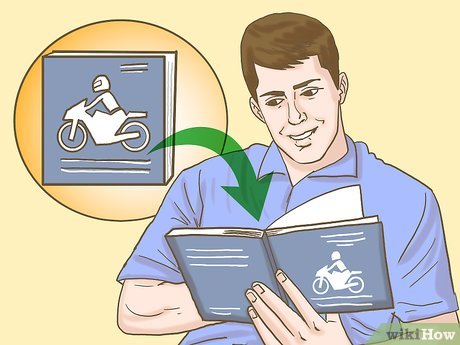
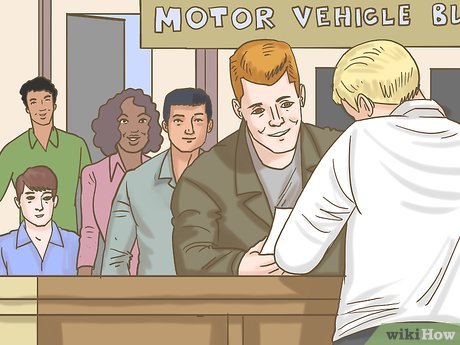
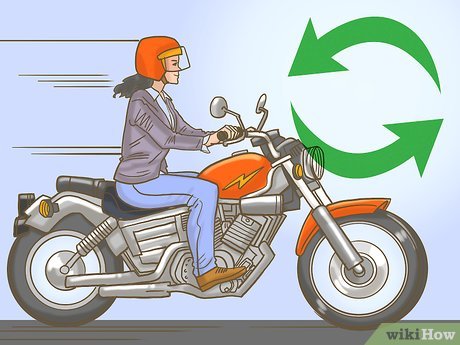
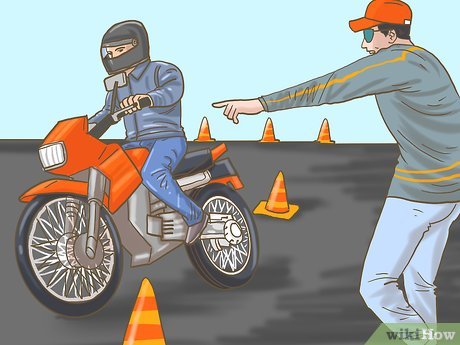
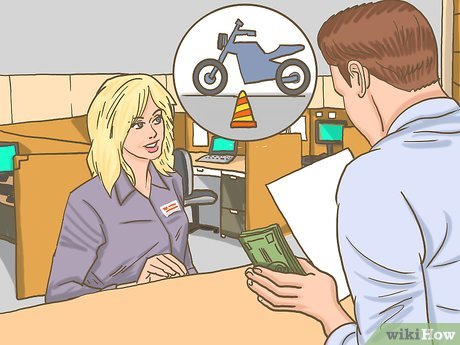
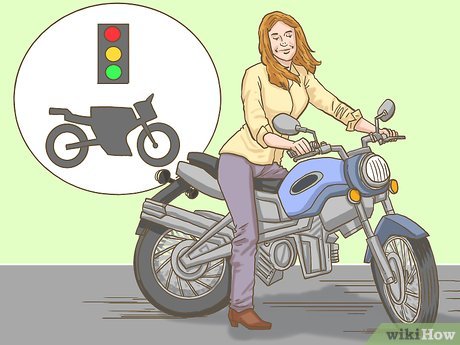
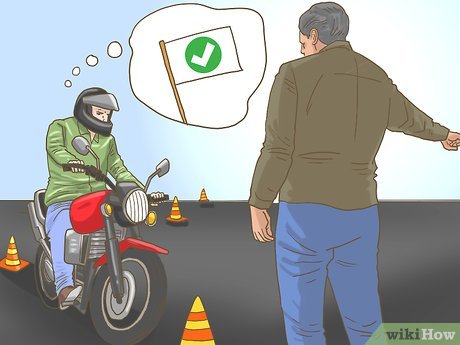

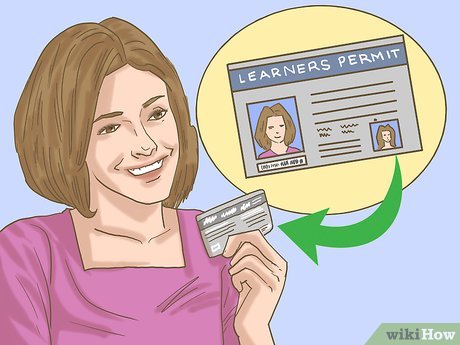
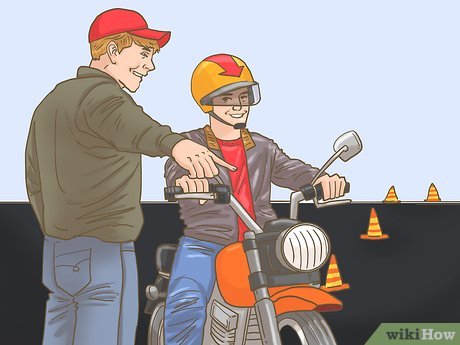
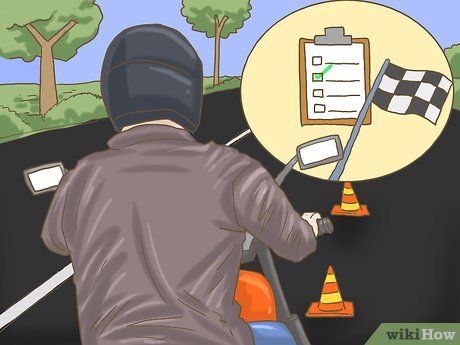

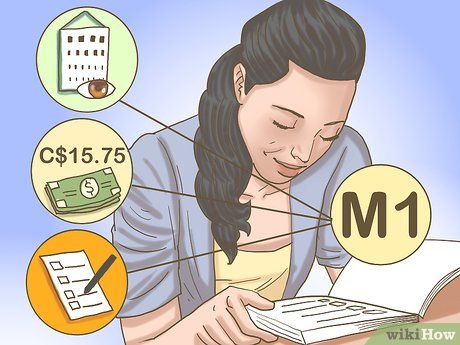
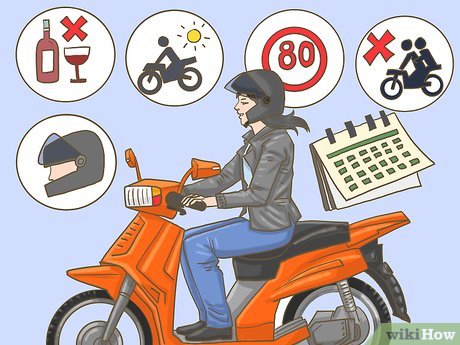
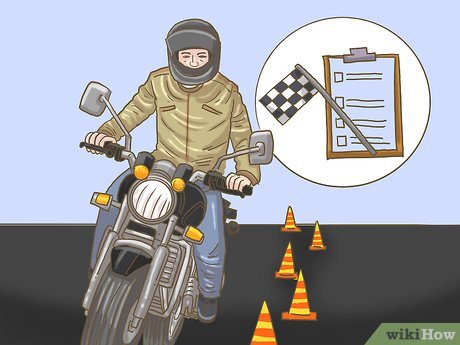
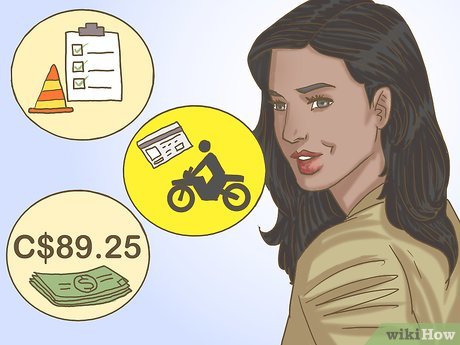










 How to Unwobble a Bicycle Rim
How to Unwobble a Bicycle Rim How to Use Jack Stands
How to Use Jack Stands How to Drive Long Distances Alone
How to Drive Long Distances Alone How to Do Donuts
How to Do Donuts How to Wash Your Bike
How to Wash Your Bike How to Register a Utility Trailer
How to Register a Utility Trailer